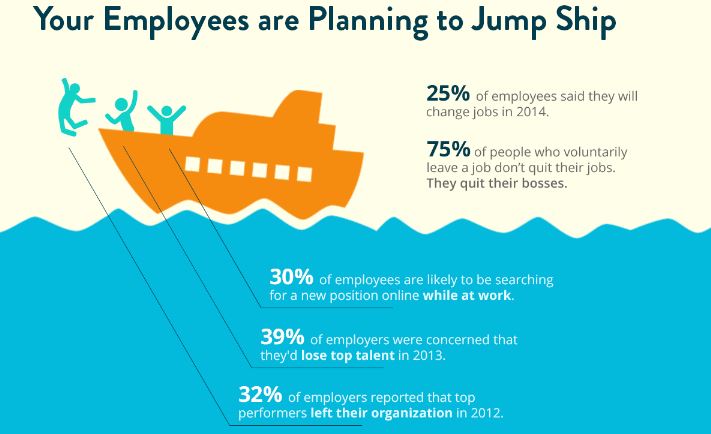Employee Engagement: The Key to Unlocking Your Team’s Potential (Infographic)
If someone told you that the only thing stunting the growth of your business was your employees’ engagement levels, would you believe them? Would you even know how to measure engagement or analyze the consequences of disengagement on your company’s success?
Reports and studies are showing there is a definite correlation between engaged employees and creative output driving business growth and innovation. According to Gallup Business Journal, research has proven that the more engaged your employees are, the better results your organization achieves.
The kicker?
If you’re a manager, you’re responsible for a crucial element in employee engagement: feedback.
It’s no secret that here at 15Five, we value the practice of regular reporting and feedback — it’s what our entire business is built on. But we wanted to dig a little deeper to see how much feedback, engagement and management styles could impact your business’s overall health.
Turns out there’s a lot to lose and a lot to gain, and the difference is sometimes teetering on just a few minutes of commitment a week. See what we mean in the infographic below:
The Numbers
With almost 100 million Americans holding full-time jobs, the numbers tell the story of who is actually engaged with their work and those who aren’t. While 30 percent is not a terrible number when it comes to engaged and inspired workers, managers should be weary of the fact that half of employees feel kind of present but not inspired by their work or leaders.
Turnover Hurts Everyone
So why do these numbers matter? The implication of unhappy employees is that they will eventually need change. Surveys are showing that 25 percent of employees say they will change their jobs this year. While job change can be dependent on many variables, exits are usually voluntary and many are due to a disconnect with employees and their bosses.
The stress and loss of productivity that comes with turnover can be detrimental to any business. Research shows that 30 percent of employees are likely searching for a new position online when they should be working, ultimately affecting your bottom line. Almost 40 percent of employers worried they would lose their top talent in 2013, a stress that can distract from moving a business forward and a heavy cost if recruitment and training of a new hire becomes necessary.
Satisfy the Feedback Cravings
So how can leaders and management avoid the cost and stress of turnover? Retention is paramount, but the incentives to stay are not what you might expect them to be. Rather than throw money at the problem in the form of bonuses and gifts, retention can easily be achieved by giving employees what they actually want: consistent feedback.
Even though a majority of managers feel they give enough feedback, employees are craving more.
Battle of the Approaches
But of course feedback is not just about quantity. While no one benefits from getting zero feedback, the type of feedback you give has a significant impact on levels of engagement. Employees who are told their weaknesses are 20x more likely to be engaged from this approach when compared to those receiving radio silence from their leaders. While this, of course, is better than no improvement, we’d suggest you take the positive approach. Those who hear their strengths are 30x more engaged than those who are only told where they need improvement.
It’s a delicate balance that leaders must manage with each employee. A possible way to better understand the nuances of each member of your team is to create a channel of consistent feedback.
With 15Five, you can create a pulse check on overall engagement in just five minutes every week. Ask your employees if they feel engaged or ask them what would they suggest that might help them feel more engaged with their work.
Almost 60 percent of engaged employees say their job brings out their most creative ideas. That should be enough to start implementing a feedback loop with your team — starting yesterday. The strength of your team is contingent on your weakest link. It’s important to identify disengaged employees and help them feel more connected to your business vision and unlock their utmost potential.
This post originally appeared on Entrepreneur.com.
Has turnover and disengagement hurt your business? How has feedback increased employee engagement and productivity? We would love to hear from you, leave us a comment below.




